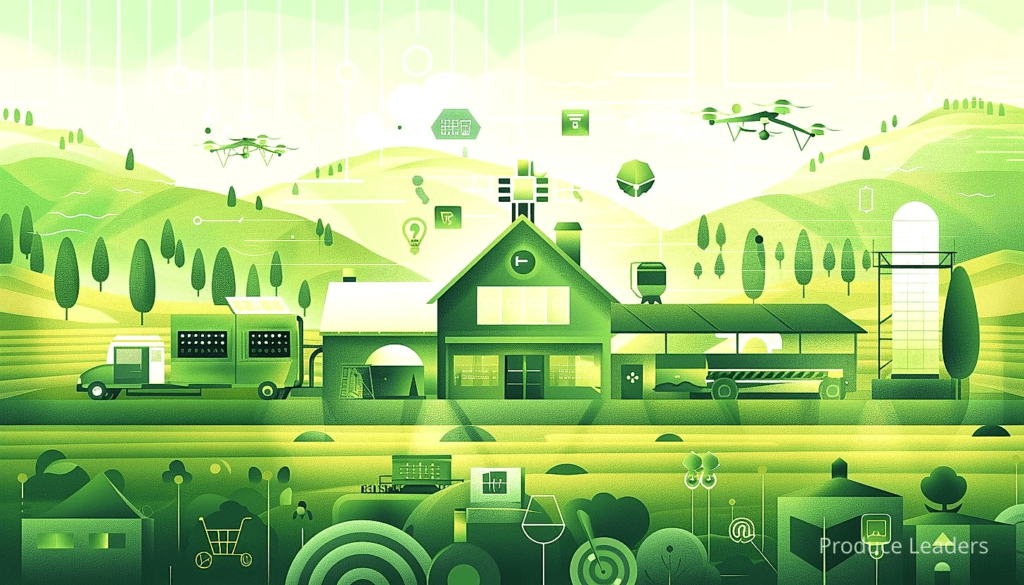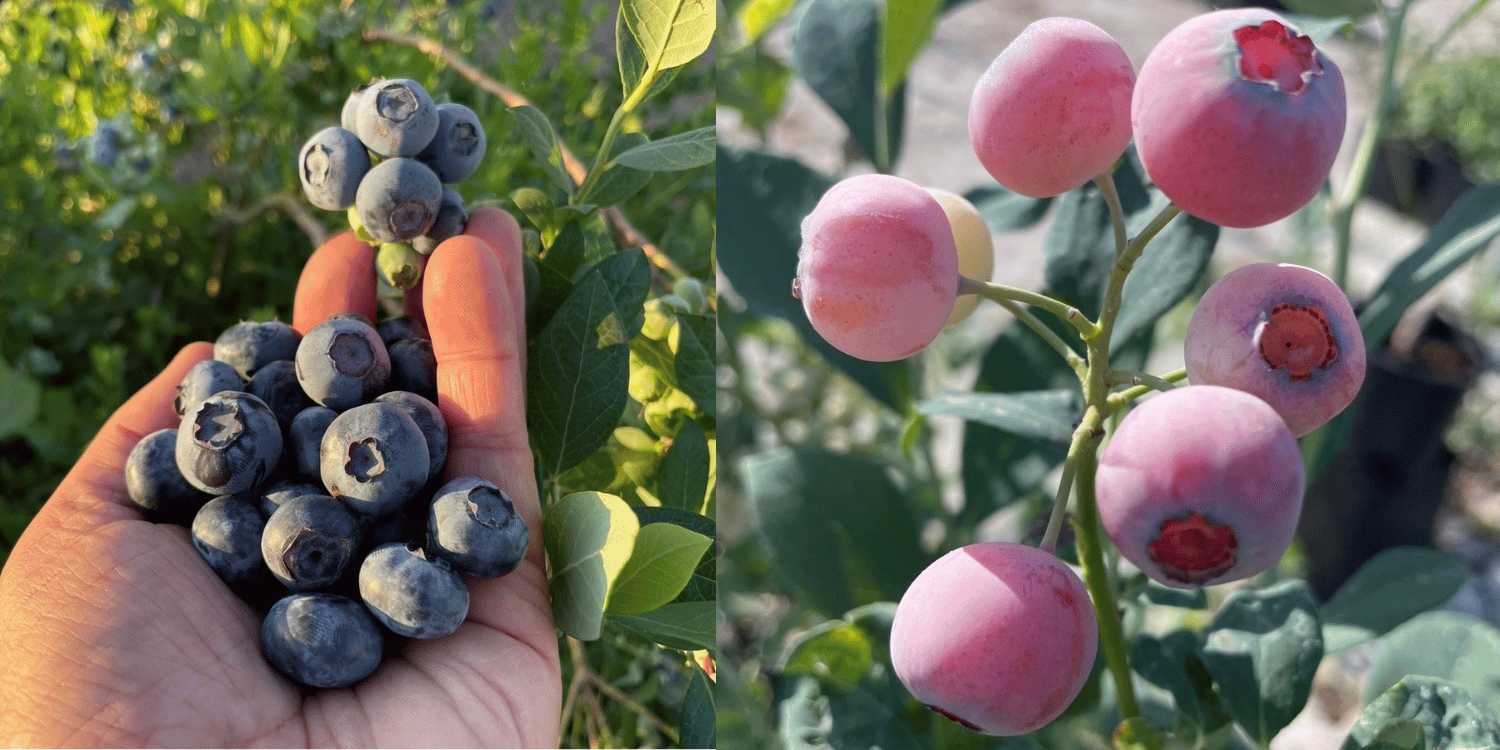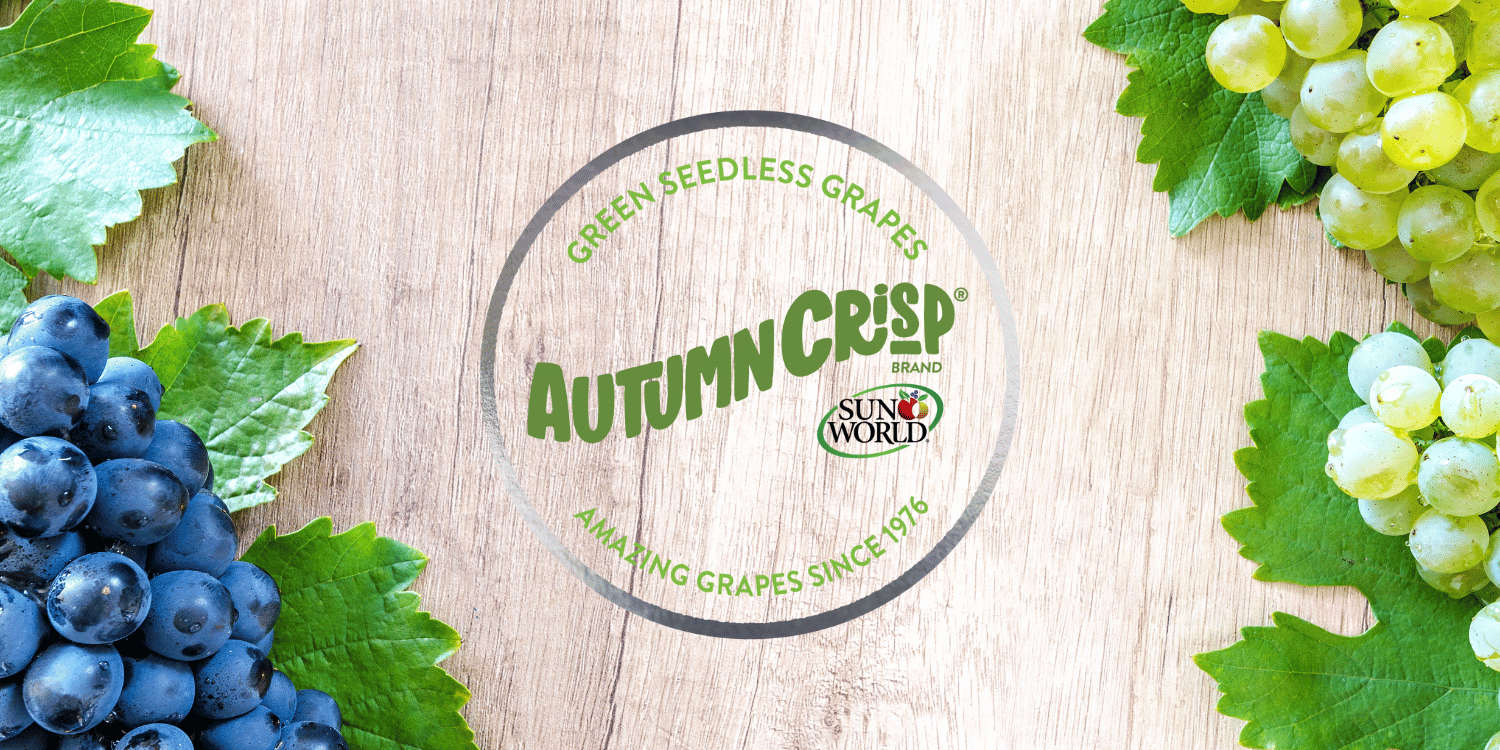The top 10 technologies streamlining produce sales include, firstly, E-commerce platforms which allow customers to purchase fresh produce online thus broadening the customer base for retailers.
Secondly, inventory management software that uses AI is gaining popularity due to its accurate forecasting of sales, helping mitigate waste of perishable goods.
Thirdly, mobile payment technology offers a streamlined checkout experience, cutting down shopping time and increasing customer convenience.
Route planning software is fourth technology, aiding in efficient delivery processes by planning optimal routes for deliverers.
Fifth, the use of augmented reality for virtual farm tours is emerging, allowing customers to see where their food comes from.
Other game-changers include, customer relationship management (CRM) software, blockchain technology for improved transparency, internet of things devices for supply chain visibility, machine learning for demand prediction, and drone technology for faster last-mile delivery.
- E-commerce platforms play a significant role in streamlining produce sales.
- AI improves inventory management through accurate forecasting and replenishment.
- Mobile payment technologies bring ease and speed to transactions.
- Route planning software optimizes delivery efficiency and time.
- Augmented reality tours offer virtual experiences of produce cultivation environments.
Beyond these key technologies, we will now be moving towards an in-depth discussion on supplementary trends that are bringing transformative changes in produce sales.
In the next sections, we will be exploring how innovations like blockchain systems, smart shelves, and Internet of Things (IoT) are modernizing this industry and reshaping customer experiences.
I strongly believe that familiarizing yourself with these emerging developments will equip you with a comprehensive understanding of this rapidly changing landscape.
Contents
- What are E-commerce Platforms in Sales?
- Role of AI in Inventory Management
- Mobile Payment Technology Benefits
- How Route Planning Software Works
- Purpose of Augmented Reality Tours
- Importance of CRM in Produce Sales
- How Blockchain Improves Transparency?
- Impact of IoT on Supply Chain
- Machine Learning for Demand Prediction
- Advantages of Drone Technology in Delivery
- The Bottom Line
What are E-commerce Platforms in Sales?
In Short: E-commerce platforms are digital software applications facilitating online business transactions by providing a virtual marketplace. They not only simplify the sales process but also offer various functions including inventory management, payment processing, shopping carts, and advanced analytics.
In the evolving world of digital commerce, e-commerce platforms are taking center stage. They are becoming instrumental in streamlining sales, particularly for produce, but how exactly do they work?
Well, e-commerce platforms are simply digital software applications that allow businesses to sell their products online. They provide a convenient virtual marketplace where buyers and sellers can meet, cutting down on time and resources. It’s fascinating, isn’t it?
Remember when our grandparents had to physically go to the market, move from one seller to another and haggle? It was indeed a tedious process. However, e-commerce platforms have facilitated the convenience of shopping from our couches.
These platforms aren’t just about convenience, they also provide a wide range of functionalities. Such as inventory management, payment processing, and customer service, to name a few. Let me tell you, what are some of these functionalities you may ask?
First, let’s look at inventory management. E-commerce platforms provide complete visibility and control over your inventory. They automate tracking, ensuring that you are updated in real-time about the status of your stock.
Imagine the convenience for a produce retailer! And if we’re talking about payment processing, these platforms bring a seamless transaction experience for both businesses and customers. Gone are the days of manually tracking payments!
With a list of functionalities, it’s clear to see why many produce sales vendors now use e-commerce platforms. Some of the most prominent features include:
- Shopping carts, which allow customers to select, review and change their potential purchases before checkout.
- Payment gateways that provide secure handling of sensitive information, such as card details.
- The ability to utilize search engine optimization (SEO) techniques, essential in increasing online visibility.
- Advanced analytics, enabling businesses to make informed decisions by providing detailed insights about their customers.
Now, having highlighted these features, we can see how e-commerce platforms revolutionize business operations. They aren’t just a digital version of a physical store – they provide far more functionalities.
And this change isn’t merely a wave of tech-inspired enthusiasm. It’s about survival. Today, if you can’t innovate and adapt to the e-commerce model, you stand to lose a significant chunk of your market.
Pro Tip: E-commerce platforms are digital software applications that offer a virtual marketplace for businesses to sell their products online, providing functionalities like inventory management, payment processing, and customer service, which are instrumental in streamlining sales.
Yet, it’s important to consider that not all platforms might be suited to your business. Each comes with its strengths and quirks and finding the right one should be a strategic decision. Are you willing to explore this digital frontier?
E-commerce platforms are indeed the way forward for businesses, especially in produce sales. They streamline operations, make transactions easy, and most importantly, they make life easier for us, the consumer. Isn’t it exciting to imagine what the future of e-commerce holds?
Role of AI in Inventory Management
In Short: AI is revolutionizing agricultural inventory management through its predictive capabilities and ability to process vast data, aiding in accurate stock predictions and quality assessment. With tools such as AI-powered inventory systems and machine learning algorithms, it’s enhancing supply chain efficiency, reducing wastage, and setting new standards for sustainability in farming.
Artificial Intelligence (AI) is no longer just a sci-fi concept, it is a revolutionary business tool that has found its way into different sectors of economy, including agriculture.
The use of AI in managing agricultural produce inventories is changing how things are done.
However, you might be wondering, what makes AI such an important tool in inventory management?
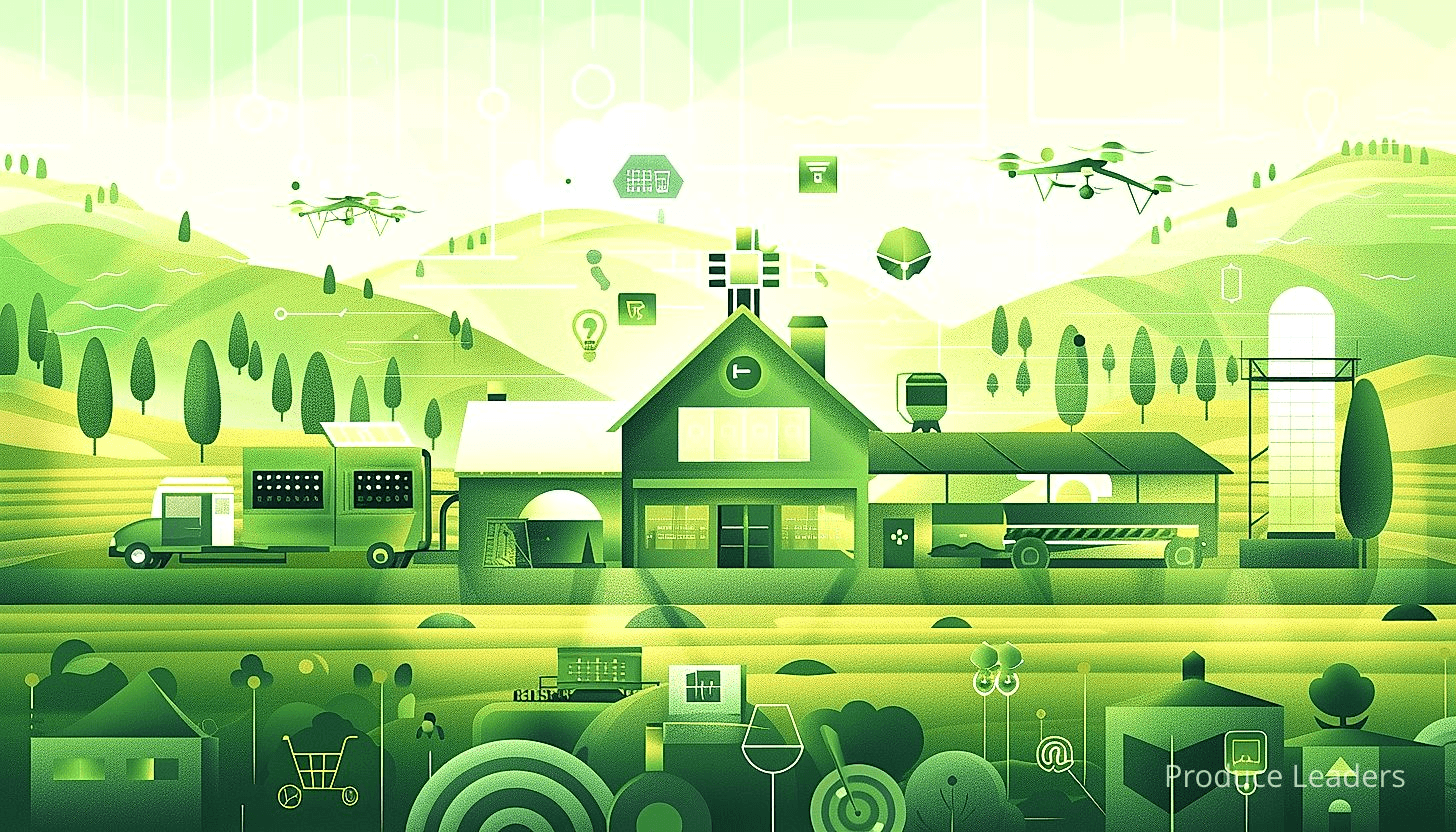
The answer lies in its predictive capabilities and ability to process vast amounts of data efficiently.
AI utilizes a combination of technologies such as machine learning and data analytics to predict trends and foresee changes in the market.
This is incredibly beneficial in managing inventories of perishable items such as fruits and vegetables.
AI can predict with remarkable accuracy the quantities of produce that are likely to be sold in a given period.
This helps in reducing wastage and the costs associated with overstocking or understocking.
AI also plays a important role in assessing the quality of produce.
It uses image recognition technology to inspect the produce for any defects or diseases which could impact its market value.
Now, let’s look at some of the specific AI tools that are streamlining inventory management:
- AI-powered inventory management systems: They provide real-time inventory updates, ensuring all stock is accounted for
- Agricultural drones: Using AI, they monitor crop health and predict yields
- Robotic process automation (RPA): AI-enabled RPA automates repetitive tasks, improving efficiency.
- Machine learning algorithms: They predict sales trends for better inventory control.
Isn’t it amazing how such advanced technology can be harnessed for something as fundamental as agriculture?
Seemingly complex problems of inventory management are now being solved effortlessly with AI.
While it’s impressive, remember that the technology is still evolving, and there is so much more that we can expect.
Complex personalization options, improved supply chain efficiency, increased sales and reduction in waste are all achievements that we can anticipate.
Isn’t it incredible how such a futuristic technology can be applied in one of our oldest industries?
You might be thinking – what’s next?
With rapid advancements in tech, we can only predict.
Pro Tip: Leverage AI in inventory management for its predictive capabilities, efficient data processing, and remarkable accuracy in forecasting sales trends, which can significantly reduce waste and costs of overstocking or understocking, particularly for perishable items.
But one thing is for sure – the fusion of AI and agriculture is reshaping the landscape of farming, while setting a new bar for efficiency and sustainability.
In essence, the real revolution is just beginning.
Mobile Payment Technology Benefits
In Short: Mobile payment technology revolutionizes business operations and shopping experiences by offering unparalleled convenience, detailed record-keeping, and enhanced security. It improves customer experience, boosts sales, provides insightful analytics, integrates with loyalty programs, and reduces operational costs, significantly enhancing the sales process in the produce sector.
In a world where digital transactions are rapidly becoming the norm, it is paramount to understand the various benefits of mobile payment technology.
This innovative technology is not only changing the way businesses operate, but it’s also revolutionizing the way consumers shop for produce. Notice a difference?
A significant benefit of mobile payment technology is the unsurpassed level of convenience it offers to both consumers and businesses.
Buyers can purchase their favorite produce at any time, from anywhere, without physical cash or cards. And isn’t that a relief in this fast-paced world?
Businesses, on the other hand, can enjoy easier transactions and faster checkouts. No more long queues and lost sales due to lengthy payment processes, surely that’s a game changer?
The ease of transaction tracking is another noteworthy benefit.
Mobile payments provide detailed digital receipts and simplify record-keeping. This level of transparency is a boon for the financial management of any business, don’t you agree?
Now, let us dig in into the various ways in which mobile payment technology is impacting the produce sales industry:
- Enhanced customer experience: Mobile payments can help businesses provide a smoother shopping experience to their customers.
- Increased sales: By speeding up the checkout process and accepting a wider range of payment methods, businesses can boost their sales.
- In-depth insights: The real-time analytics provided by mobile payment platforms can help businesses gain valuable insights into their consumers’ buying habits.
Quite compelling, isn’t it?
Moreover, mobile payment technologies play a crucial role in preventing fraud and enhancing security. These systems use encrypted transactions, making it difficult for hackers to gain access to sensitive data.
The peace of mind that comes with knowing your financial data is protected cannot be overstated, can it?
Another significant advantage is the potential for a seamless integration with loyalty programs. Shoppers can easily earn and redeem points, further enhancing their shopping experience.
Doesn’t it make sense to combine convenience with rewards?
Mobile payments also hold the potential to reduce operational costs for businesses. They eliminate the need for expensive point-of-sale systems and credit card processing equipment.
The financial savings could be channeled into growth and expansion opportunities, wouldn’t that be wise?
Important: A significant benefit of mobile payment technology is the unsurpassed level of convenience it offers to both consumers and businesses, also enhancing customer experience, boosting sales, providing in-depth consumer insights, and increasing security.
Embracing mobile payment technology holds countless benefits for the produce sales sector. It merges convenience, efficiency, and security, significantly enhancing the entire sales process.
Let me tell you, are you ready for a more seamless, secure, and convenient way of making and receiving payments?
How Route Planning Software Works
In Short: Route planning software operates systematically and efficiently, taking into account factors such as destination, vehicle details, traffic conditions, and weather to optimize routes. The software’s algorithms minimize travel time and costs, provide real-time updates and recalibrations, and offer tracking solutions for managers, revolutionizing operations and setting new efficiency standards.
The technology behind route planning software is truly remarkable, isn’t it?
Getting into the intricacies of how it operates, we find it does so in a staggeringly systematic and efficient manner.
It all begins with the input of variables.
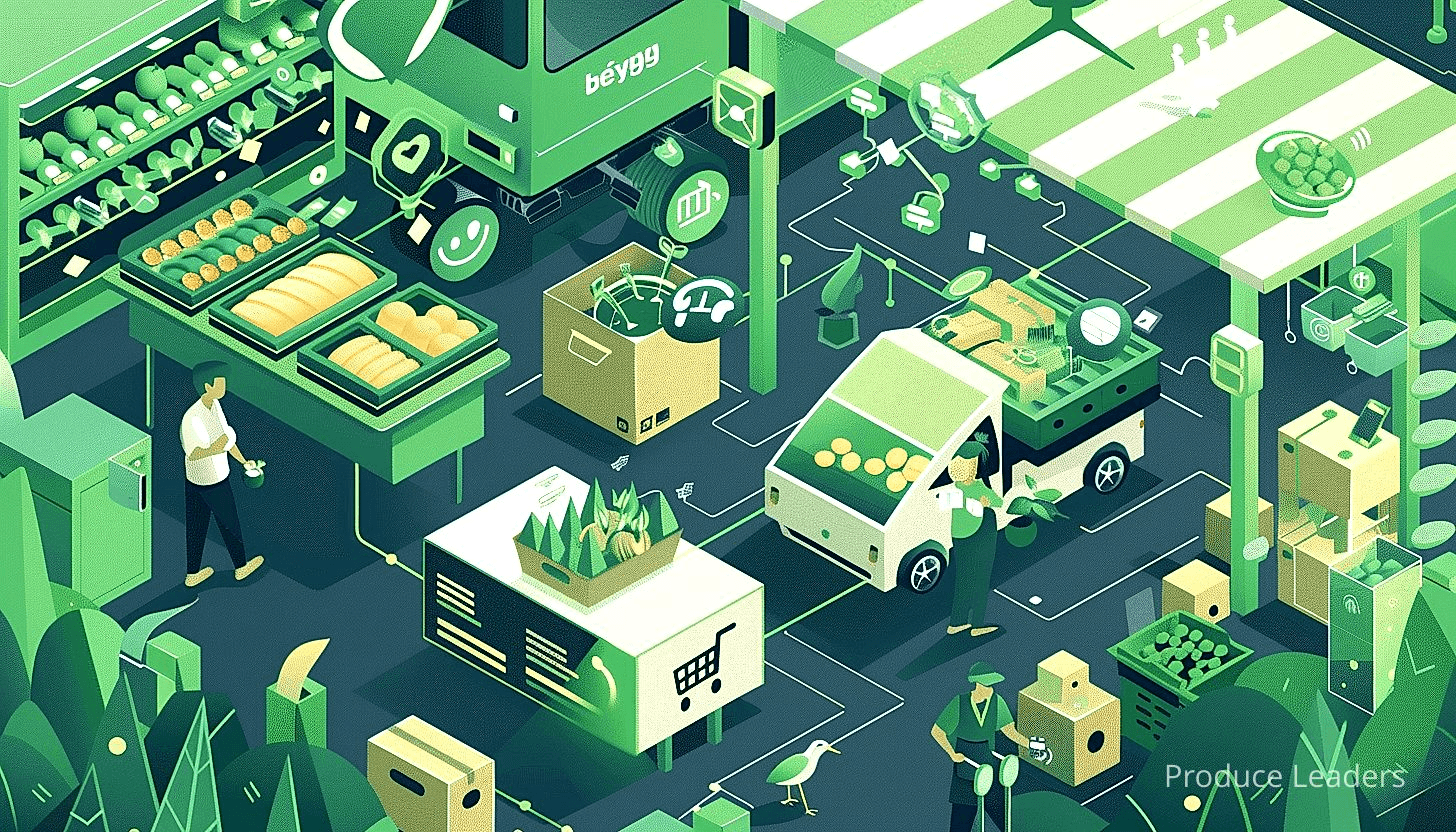
These variables include basic data like destination addresses and vehicle details.
More elaborate software can also take into account factors like traffic conditions and weather patterns to ensure an optimized route.
Isn’t it impressive how the software can process all these variables and come up with an efficient plan?
Let’s pause here and reflect on the key components of an exceptional route planning software.
- Data Collection: Gathering the necessary information to form the basis of route optimization.
- Processing: Analysis of the collected data to establish the most efficient path.
- Rerouting: Adapting to change in real-time, considering variables like congestion and road closures.
Now, once data is input, the software uses algorithms to establish the optimal route for each vehicle.
Think about it, how remarkable is it that the software accomplishes all that within fractions of a second?
The objective is to minimize travel time and costs, maximizing overall efficiency.
Important to note is the iterative nature of these algorithms.
They continuously reassess and recalibrate the routes based on any changes in real-time.
Yes, you guessed it, nothing is left to chance!
The output is then communicated to the driver, typically through a GPS-enabled device.
The driver now has access to a route plan that is updated in real-time, adapting to any unforeseen changes.
Modern systems also provide tracking solutions for managers.
This allows them to monitor the efficiency and progress of each driver in real-time.
Like the cream on a cake, isn’t it?
Fascinating, isn’t it, to see how technological advancements are revolutionizing the way produce sales operations are conducted?
Route planning software, with its capabilities to optimize and streamline operations, is certainly a game-changer.
The world is moving forward, and talented developers continue to further refine and expand the capabilities of these software systems, pushing boundaries and setting new standards for efficiency. Isn’t it a great time to be alive and witness all these advancements?
No doubt, the future of produce sales is indeed promising, with route planning software paving the way for optimized and efficient distribution.
Purpose of Augmented Reality Tours
In Short: Augmented Reality Tours revolutionize business interaction by providing a virtual ‘try before you buy’ experience, enhancing customer engagement, convenience, and informed decision-making. The technology not only facilitates product transparency and marketing directly to customers, but also foresees a promising future for produce sales.
If you haven’t heard of Augmented Reality Tours, they are a cutting-edge technology that are completely transforming the way we interact with businesses. Do you know what they bring?
Their primary purpose is to enhance customer experiences by offering a virtual ‘try before you buy’ scenario. Isn’t it better to fully visualize a product before making the purchase?
Augmented Reality is providing an immersive environment where consumers can explore fresh produce like never before. What if you could see where and how your fruits and vegetables are grown without actually being there?
The concept of AR brings that possibility to life. It allows consumers to inspect their produce, verify its quality and be assured of its freshness.
In light of understanding what an AR tour does, let us dig in into its key benefits.
- The first thing you’d notice is increased engagement. With AR tours, consumers are not just looking, they are experiencing. Isn’t that more engaging?
- Then, it brings the aspect of convenience. You can check out the farm produce, from the comfort of your home.
- It does not end there. AR tours also facilitate informed decision-making. Since you have all the information at your fingertips, wouldn’t you make better purchase decisions?
By now, you must be wondering how businesses are leveraging this. And trust me, they are. Companies are using AR tours to market produce directly to consumers, thus eliminating middlemen. Can you imagine the cost savings for both parties?
More than just marketing, AR is pushing the envelope in terms of product transparency. It allows businesses to share behind-the-scenes production practices. Isn’t gaining customers’ trust important for any business?
Pro Tip: Leverage Augmented Reality tours in your business operations for enhanced customer experience, increased engagement, convenience, informed decision-making, and product transparency.
It’s incredible how this technology allows us to experience something realistically without being physically present. What a convenience that is! Especially during times when we cannot freely travel, isn’t it a boon to still be able to experience things digitally?
One thing is for sure, the future of produce sales with Augmented Reality looks bright. How soon till you experience it?
Importance of CRM in Produce Sales
In Short: CRM systems are vital in produce sales, providing a platform to manage customer relationships by monitoring interactions, predicting customer needs and streamlining business processes. Effective CRM usage leads to enhanced business efficiency, customer satisfaction, and a strengthened connection with the customer base.
When looking at produce sales, we cannot overlook the pivotal role played by Customer Relationship Management (CRM) systems. These intricate tools serve as the fulcrum for every successful business.
They create an efficient platform for managing relationships with customers. How critical does this translate to the world of produce sales?
A CRM system offers a consolidated database for all customer-related information. It allows businesses to track customer interactions and systematically record them.
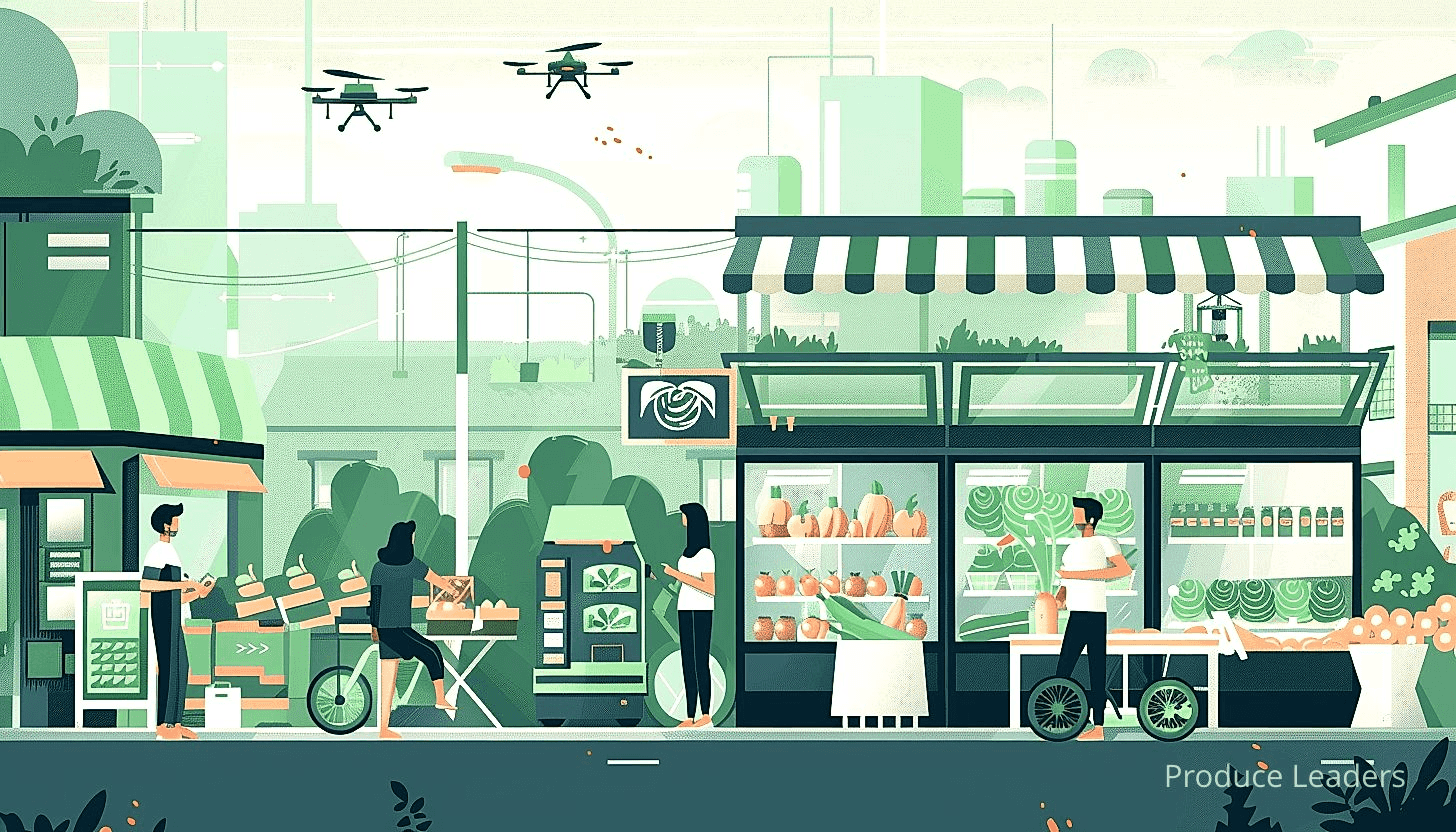
Accurate data not only provides valuable insights but also allows businesses to tailor their offerings. The produced data assist businesses in predicting customer needs and preferences.
Over time, CRM helps businesses build a personalized rapport with customers. Isn’t the personalized connection the key to repeat business?
It is not just about managing customers though. CRM is just as much about managing business processes.
The efficiency of CRM in sales, marketing, and service, facets of any organization cannot be overstated. With a clear picture of customer behavior, businesses can craft targeted marketing campaigns.
An effective CRM system can also ease the workload on sales representatives. How so? Here are several reasons:
- Automation of routine tasks
- Identification of potential customers
- Tracking of communications and sales processes
Such benefits make sales reps more productive, enhancing overall business efficiency.
Now, let’s not forget about the service aspect of businesses. Efficient CRM systems lead to satisfied customers.
They ensure that customer issues and queries are taken care of in a timely and effective manner. This results in improved customer satisfaction and strengthens the relationship between customers and the businesses.
In essence, CRM offers a holistic approach to managing customer relationships. It brings about a seamless integration of marketing, sales and customer service activities.
Deploying an effective CRM strategy therefore becomes a boon for businesses, particularly those involved in produce sales. Do you think any business can survive today without strong customer relationships?
Important: A CRM system is pivotal to produce sales, offering a consolidated database for tracking customer interactions, predicting customer needs, managing business processes and crafting targeted marketing campaigns, essentially leading to satisfied customers and enhanced business efficiency.
The answer is an unequivocal no. Businesses that uphold their relationship ethos are those that are built to last. Produce sales, like any other sector, have customers at their core.
Incorporating a CRM system therefore becomes essential in orchestrating the effort to meet and exceed customer expectations. A stellar CRM platform indeed paves the way for a loyal and satisfied customer base.
How Blockchain Improves Transparency?
In Short: Blockchain technology significantly improves transparency in the food supply chain by recording every transaction from farmer to consumer in a secure and reliable digital ledger. This technology provides vital information about the origin and journey of the food, while ensuring privacy and accessibility of data for authenticated users.
Have you ever considered how our food gets from farms to our supermarkets? The journey of a single apple might have more twists and turns than you would think.
Many people wonder, can blockchain technology revolutionize this complex process? Hint: The answer is a resounding YES!
Blockchain technology provides a decentralised database, or “digital ledger”, of transactions that are accessible to all participants in the network. By making these transactions transparent and secure, blockchain could significantly improve traceability in the food supply chain.
But, how does it do that?
Well, blockchain allows every transaction, from the farmer to the end consumer, to be recorded and visible to all parties. A good example would be, if a farmer sells apples to a supplier, this transaction is documented in the blockchain.
When the supplier then sells these apples to a supermarket, this transaction is also added. The end consumer can then look at the blockchain and see every single step of the apple’s journey.
Just imagine, instead of vague labels like ‘Product of USA’, what if you could see the actual journey of your apple? What if you could be sure of its origins and the journey it took to reach you?
Now, let’s break down how blockchain improves transparency:
- Traceability: Blockchain’s ‘digital ledger’ records every transaction and movement of each product, so you can always track where your food comes from.
- Security: For a change to be made, it would need the consensus of the entire network, this makes the system secure and reliable.
- Accountability: If an issue occurs, the transparent nature of blockchain makes it simple to find the root cause of the problem.
However, a question might have popped up in your mind. If everyone can see the transactions, does this mean that proprietary information is at risk?
The answer is no. Blockchain technology uses advanced cryptography to ensure privacy and only allow authenticated users to access the information they are permitted to see.
This comes in handy at every step of the food chain, especially for consumers. Most people aren’t just concerned about the freshness of their produce these days.
They also care about its origin, authenticity and ethical handling. Blockchain technology could provide all this information at the click of a button. It’s digitized transparency and traceability at its finest!
Let me tell you, the next time you’re biting into an apple, remember, blockchain technology might have played a pivotal role on its journey to your mouth.
While it’s truly remarkable how blockchain can provide such clarity in the food supply chain, remember that technology is still developing. But as it grows, it will play an even bigger role in bringing us closer to understanding the journey of our food.
Piqued your interest much?
Impact of IoT on Supply Chain
In Short: The Internet of Things (IoT) revolutionizes supply chain logistics by enabling real-time tracking, data analysis, and proactive decision-making, particularly in produce sales. Through increased efficiency, reduced waste, and improved customer satisfaction, IoT heralds a new era for supply chains.
As we venture deeper into the digital age, the intersection of technology and supply chain logistics has become undeniably apparent. The arrival of Internet of Things or IoT in the sector of produce sales has initiated a wave of unprecedented changes.
But what is it about IoT that makes it a game-changer for the supply chain?
IoT, with its network of devices connected via the internet, creates a platform that enables seamless and instantaneous two-way communication. The large volumes of data generated with the help of IoT devices can be analysed and used to predict trends, track inventory, and manage resources more efficiently.
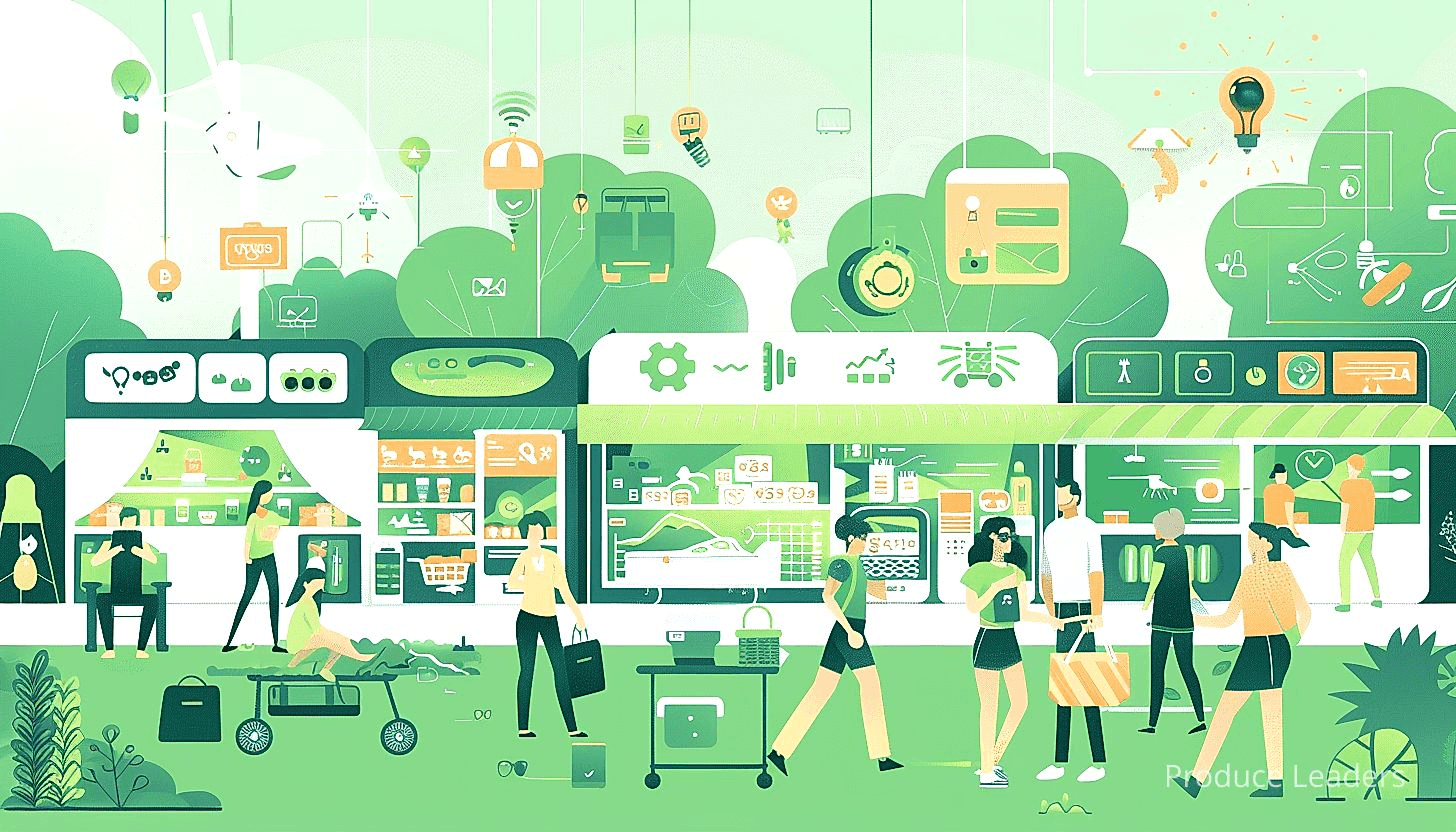
And how does this ramp up efficiency in supply chains related to produce sales? Let’s break it down.
Before we dig in into the many ways that IoT empowers the produce sales sector, it’s beneficial to summarize the key components:
- A vast network of interconnected devices embedded with sensors.
- Ability to analyse collected data for instant insights.
- Facilitates proactive decision making based on data trends.
- Improve efficiency in tracking and managing inventory.
The application of IoT essentially fast-tracks supply chain visibility, allowing companies to monitor their products in real-time at every stage.
Can you imagine the countless possibilities with such unhindered accessibility to data?
From the moment the produce is harvested to the time it’s delivered to the buyer’s doorstep, every detail is tracked and monitored. By allowing you to monitor quality, location, temperature, etc., the chances of late arrivals and waste due to spoilage is greatly reduced.
Moreover, it’s not just about making the processes efficient but also about giving the customers what they want.
With the continuous rise in conscious consumerism, people now expect complete transparency about where their food comes from. IoT makes it possible to provide traceability for every unit, down to the exact source, growing conditions, harvest details etc., increasing gains for businesses with such transparency.
Pro Tip: Integrating IoT into your business operations could significantly increase efficiency, reduce waste, and enhance customer satisfaction by providing real-time tracking and full traceability in supply chains.
Let me tell you, have you considered what this digital makeover could do for your business?
Admittedly, integrating IoT into your business operations may seem daunting initially. But it’s undeniable that this step towards digitisation will yield significant ROI in the long run. With increased efficiency, reduction in waste and impressive customer satisfaction, IoT systems are ushering in a new era for the supply chain in produce sales. Let’s move forward with technology on our side, shall we?
Machine Learning for Demand Prediction
In Short: Machine learning is revolutionizing the produce sales industry by analyzing historical sales data to accurately predict product demand, hence, optimizing inventory and sales. Through real-time predictions, highly accurate forecasts, seasonal forecasting, and cost efficiency, machine learning has become a crucial tool for improved efficiency in demand prediction.
One of the most effective technological enhancements revolutionizing the produce sales industry is machine learning. This powerful tool, equipped with algorithms and data-driven models, is transforming traditional methods
But how does Machine Learning contribute to demand prediction?
Machine learning algorithms analyze historical sales data and continuously adapt to changes. They are able to detect patterns in consumer behavior. With these patterns, they can accurately predict product demand, optimizing inventory and sales processes.
Are you wondering about the different ways in which machine learning aids in demand prediction? Here are some key points:
- Real-time prediction: Machine learning can analyze data and make predictions in real-time. This feature helps businesses react swiftly to market changes.
- High accuracy: With machine learning, the margin for error in predicting demand is significantly reduced. By using past data and current trends, it gives very accurate predictions.
- Seasonal forecasting: Machine Learning can even effectively forecast demands based on seasons and festivals, which have always been challenging.
- Cost efficiency: Accurate demand prediction leads to optimized inventory levels, lowering storage and wastage costs.
Let me tell you, the benefits of using machine learning for demand prediction are certainly numerous.
Often, businesses use machine learning and interest aggregators to analyze user discussions and product reviews across various platforms. Why, you may ask? This helps gauge consumer sentiment towards different products. These insights can help forecast demand for a specific product, improving sales strategy.
A tangible example of machine learning in action can be seen in the fast-food industry. Leading chains utilize machine learning to anticipate customer orders and manage inventory, streamlining operations and reducing waste.
Machine learning has undoubtedly carved a niche for itself in the produce sales industry.
In a nutshell, it’s safe to say that machine learning is now a pivotal tool required for accurate demand prediction and overall improved efficiency in the world of produce sales.
Advantages of Drone Technology in Delivery
In Short: Drone technology in delivery significantly boosts efficiency, speed, freshness, cost-effectiveness, and accessibility, while reducing emissions and offering real-time tracking, contributing to a stronger brand image. Despite regulatory challenges, the thriving prospects of the drone delivery model, including contactless delivery, make it a promising feature in the produce sales industry.
Have you ever considered how drone technology could revolutionize the produce sales industry? Let’s take a moment to contemplate this
The use of drones for delivery brings with it a wide array of benefits that could definitely prove to be a game changer for businesses engaged in the selling of produce.
Perhaps the most significant advantage of drone delivery is its efficiency and speed. Can you imagine fresh produce delivered to your doorstep in minutes?
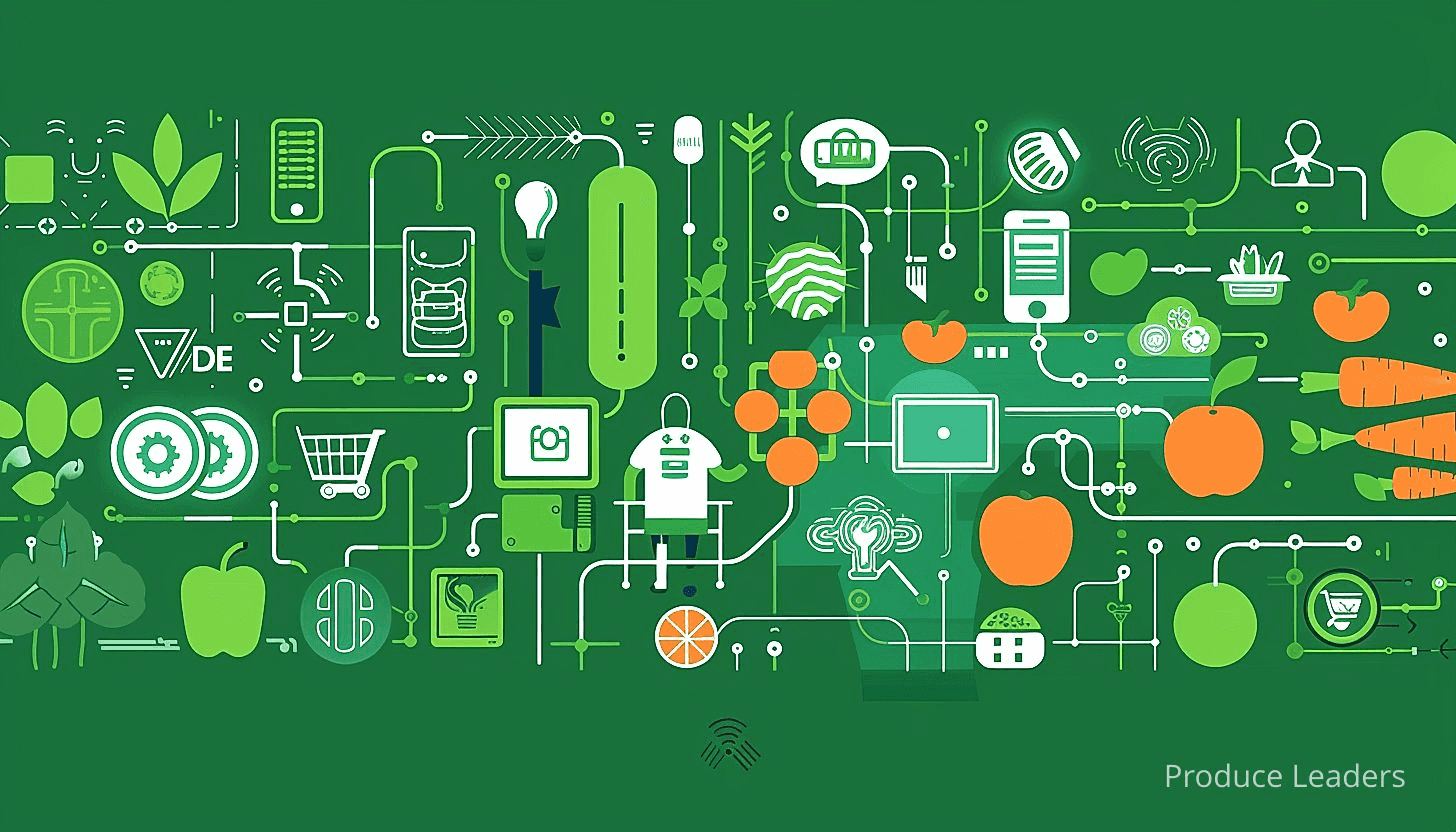
In other words, grocery stores, farmers, and other producers can ensure fresh delivery, eliminating any worries about products getting spoiled in transit.
- Cost-effectiveness: While there might be an investment in the upfront cost of the drones, over time, the savings from reduced labor and transport costs can be significant.
- Increased Accessibility: Drones could potentially reach areas that traditional delivery systems do not easily cater to, say, a secluded farm or a remote neighborhood.
- Reduced Emissions: As drones are generally electric, they could help in significantly reducing carbon emissions, contributing towards a greener environment.
- Real-time Tracking: By using GPS, customers can follow deliveries in real-time, providing a superior experience and further enhancing satisfaction.
Beyond efficiency, another four distinct advantages of using drone technology in delivery include:
Impressed by the potential of drones already?
Drone delivery also allows for a contactless delivery model which has proved to be critical during the COVID-19 pandemic. Isn’t it brilliant?
Moving on, drone technology is not just about delivery efficiency; it’s about building a brand image as well. Businesses using drone technology are seen as innovative and customer centric.
So what’s the catch?
Regulation is indeed a significant concern. The rules for drones are still in the making in most parts of the world, and commercial use of drones is heavily regulated in some countries.
However, the potential rewards from drone delivery far outweigh these challenges and it’s clear to see that drone delivery has a bright future.
Let me tell you, is your business ready to embrace the benefits of drone delivery in produce sales? Clearly, the sky is literally the limit!
The Bottom Line
E-commerce platforms serve as a foundational tool in optimizing sales by providing a virtual marketplace for produce, enabling businesses to reach a wider consumer base.
The deployment of AI in inventory management plays a pivotal role in monitoring stock levels, predicting trends, and preventing wastages.
Mobile payment technologies enhance buying experiences by offering speed, simplicity, and safety in transactions.
Route planning software significantly optimizes the time, costs, and effort involved in the delivery process by determining the most efficient paths.
Augmented Reality (AR) tour functions primarily to provide consumers with a 3D view of products, helping them make well-informed purchase decisions.
Customer Relationship Management (CRM) systems form a crucial component of produce sales, fine-tuning customer interactions and fostering business-customer relationships.
Blockchain technology’s main contribution lies in fortifying the transparency aspect of transactions, which boosts trust and integrity in business processes.
The Internet of Things (IoT) has a profound influence on the supply chain by ensuring real-time tracking, improved productivity, and predictive maintenance.
Machine Learning, a subset of AI, aids in accurately predicting product demand, consequently refining inventory control and preventing surplus or deficit.
Drone Technology in delivery provides several advantages such as efficient and swift deliveries and accessibility to remote locations, which can indeed revolutionize the realm of produce sales.

